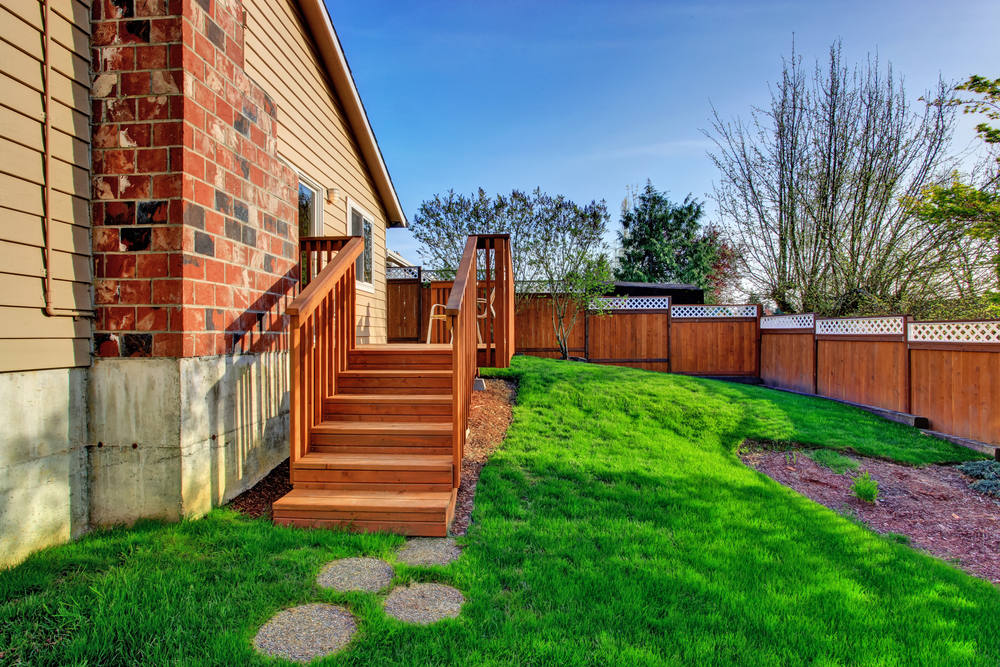Building fences is the most effective way keep your pets and livestock corralled (kids too!), establish boundaries on your property and help to give you some privacy from the prying eyes of neighbors or passersby.
Fencing also helps to make your property more visually appealing!
In some cases, fence-building can present some interesting challenges, and one of those is dealing with slopes and uneven areas on your lot.
The Intermountain West is known for its breathtaking terrain, but the very elements that make our part of the country so beautiful also can make construction and home improvement projects a hassle.
Consider all the facts if you plan to add fencing to your sloped or uneven property.
Sloped Property
When adding a fence to a property with significant slope, you have two basic choices:
- Grade the slope, which involves digging and cutting to make the land level, and can be expensive and time consuming.
- Build the fence to follow the slope of your property.
The right approach for you will depend on several factors, including the type of fencing material you prefer and your budget for the project. In some cases, land use restrictions and homeowners association guidelines don’t allow you to make major changes to grade or slope.
If you must deal with a slope, you have several options for design.
Contoured Fencing
If your lot has a fairly gentle, uniform slope, contoured fencing is an easy and cost-effective approach. Fence panels are simply installed along the contours of the lot.
As a result, the top of the fence will not be level, but parallel to the ground in that particular spot. This approach works best when you select fencing with a decorative or curved top edge, to mimic the terrain’s curves.
Stepped Fencing
A stepped fence works well for steeper slopes, especially if you prefer the tops of your panels to be level rather than parallel to the ground’s contours. In this approach, standard-width fence panels are installed so that each piece steps down (or up) from the next as it follows the run of your slope.
The one drawback to this design is that gaps typically occur between the bottom of the panels and the ground. Stepped fencing has an aesthetically pleasing look, but might not be a great choice if you want to keep pets in or critters out.
Racked Fencing
Racked fencing is installed the same way as a stepped design, but it uses smaller (narrower) panels, allowing it to follow the lot’s grade more closely.
Although you won’t completely eliminate the gaps at grade level, you can minimize them. The one drawback to a racked design is that, because the panels are narrower, it can create a choppy look that’s less pleasing to the eye.
A Few Final Considerations
Before deciding on a final design, be sure to check your city or county’s guidelines and any homeowners association restrictions that may apply.
You can also correct a multitude of sins with the right landscaping. Adding planters inside the yard is a practical and attractive way to minimize the appearance of any gaps, improving the look of your fence as well as preventing entry and escape for small animals.
If you plan to add one or more gates to your project, it’s best to locate them at the most level parts of the slope. To effectively swing in or out, gates must be mounted high enough to move freely above the ground. Otherwise, some degree of grading must be done at that location to facilitate the gate’s movement.
Outback Fencing, your locally owned and operated experts, serves Utah, Idaho and Wyoming. We have many years of experience working with all types of slopes and terrain. Call on us for a free estimate for your property and rest assured that we are experts at building fences of all types!


